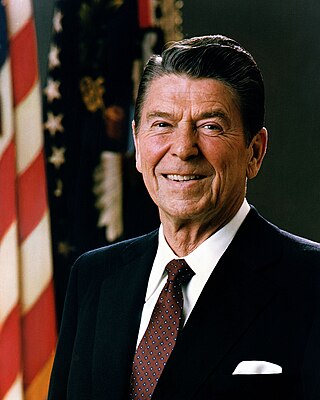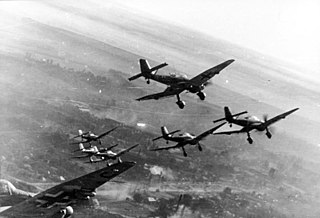
Abraham Lincoln was an American lawyer, politician, and statesman who served as the 16th president of the United States from 1861 until his assassination in 1865. Lincoln led the Union through the American Civil War to defend the nation as a constitutional union and succeeded in abolishing slavery, bolstering the federal government, and modernizing the U.S. economy.

The American Civil War was a civil war in the United States. It was fought between the Union and the Confederacy, the latter formed by states that had seceded. The central cause of the war was the dispute over whether slavery would be permitted to expand into the western territories, leading to more slave states, or be prevented from doing so, which was widely believed would place slavery on a course of ultimate extinction.

Brazil, officially the Federative Republic of Brazil, is the largest country in South America and in Latin America. Brazil is the world's fifth-largest country by area and the seventh most populous. Its capital is Brasília, and its most populous city is São Paulo. The federation is composed of the union of the 26 states and the Federal District. It is the only country in the Americas to have Portuguese as an official language. It is one of the most multicultural and ethnically diverse nations, due to over a century of mass immigration from around the world, and the most populous Roman Catholic-majority country.

Christopher Columbus was an Italian explorer and navigator from the Republic of Genoa who completed four Spanish-based voyages across the Atlantic Ocean sponsored by the Catholic Monarchs, opening the way for the widespread European exploration and European colonization of the Americas. His expeditions were the first known European contact with the Caribbean and Central and South America.

James Earl Carter Jr. is an American politician and humanitarian who served as the 39th president of the United States from 1977 to 1981. A member of the Democratic Party, he served as the 76th governor of Georgia from 1971 to 1975, and as a Georgia state senator from 1963 to 1967.

Los Angeles, often referred to by its initials L.A., is the most populous city in California, the most populous U.S. state. It is the commercial, financial, and cultural center of Southern California. Los Angeles is the second-most populous city in the United States after New York City, with a population of roughly 3.9 million residents within the city limits as of 2020. Los Angeles has a Mediterranean climate, an ethnically and culturally diverse population, and a sprawling metropolitan area. It is perhaps best known as the home of the Hollywood film industry.

Martin Luther King Jr. was an American Baptist minister and activist who was one of the most prominent leaders in the civil rights movement from 1955 until his assassination on April 4, 1968. A Black church leader and a son of early civil rights activist and minister Martin Luther King Sr., King advanced civil rights for people of color in the United States through nonviolence and civil disobedience. Inspired by his Christian beliefs and the nonviolent activism of Mahatma Gandhi, he led targeted, nonviolent resistance against Jim Crow laws and other forms of discrimination in the United States.

North America is a continent in the Northern Hemisphere almost entirely within the Western Hemisphere. North America is bordered to the north by the Arctic Ocean, to the east by the Atlantic Ocean, to the southeast by South America and the Caribbean Sea, and to the west and south by the Pacific Ocean. The region includes Canada, the Caribbean, Central America, Greenland, Mexico, and the United States.

Ronald Wilson Reagan was an American politician and actor who served as the 40th president of the United States from 1981 to 1989. A member of the Republican Party, his presidency constituted the Reagan era, and he is considered one of the most prominent conservative figures in the United States.

The Vietnam War was a conflict in Vietnam, Laos, and Cambodia from 1 November 1955 to the fall of Saigon on 30 April 1975. It was the second of the Indochina Wars and was officially fought between North Vietnam and South Vietnam. The north was supported by the Soviet Union, China, and other communist states, while the south was supported by the United States and other anti-communist allies. The war is widely considered to be a Cold War-era proxy war. It lasted almost 20 years, with direct U.S. involvement ending in 1973. The conflict also spilled over into neighboring states, exacerbating the Laotian Civil War and the Cambodian Civil War, which ended with all three countries becoming communist states by 1975.

World War II or the Second World War, often abbreviated as WWII or WW2, was a global conflict that lasted from 1939 to 1945. The vast majority of the world's countries, including all of the great powers, fought as part of two opposing military alliances: the Allies and the Axis. Many participants threw their economic, industrial, and scientific capabilities behind this total war, blurring the distinction between civilian and military resources. Aircraft played a major role, enabling the strategic bombing of population centres and the delivery of the only two nuclear weapons ever used in war. World War II was by far the deadliest conflict in history, resulting in an estimated 70 to 85 million fatalities, mostly among civilians. Tens of millions died due to genocides, starvation, massacres, and disease. In the wake of the Axis defeat, Germany and Japan were occupied, and war crimes tribunals were conducted against German and Japanese leaders.

Canada has ten provinces and three territories that are sub-national administrative divisions under the jurisdiction of the Canadian Constitution. In the 1867 Canadian Confederation, three provinces of British North America—New Brunswick, Nova Scotia, and the Province of Canada —united to form a federation, becoming a fully independent country over the next century. Over its history, Canada's international borders have changed several times as it has added territories and provinces, making it the world's second-largest country by area.

The Cold War was a period of geopolitical tension between the United States and the Soviet Union and their respective allies, the Western Bloc and the Eastern Bloc. Cold war is used because there was no large-scale fighting directly between the two superpowers, but they each supported opposing sides in major regional conflicts known as proxy wars. The conflict was based on the ideological and geopolitical struggle for global influence by these two superpowers, following their roles as the Allies of World War II that led to victory against Nazi Germany and Imperial Japan in 1945. Aside from the nuclear arms race and conventional military deployment, the struggle for dominance was expressed via indirect means, such as psychological warfare, propaganda campaigns, espionage, far-reaching embargoes, sports diplomacy, and technological competitions like the Space Race.

The United States men's national soccer team (USMNT) represents the United States in men's international soccer competitions. The team is controlled by the United States Soccer Federation and is a member of FIFA and CONCACAF.

The United States of America, commonly known as the United States or America, is a country primarily located in North America consisting of 50 states, a federal district, five major unincorporated territories, nine Minor Outlying Islands, and 326 Indian reservations. It is the world's third-largest country by both land and total area. It shares land borders with Canada to its north and with Mexico to its south and has maritime borders with the Bahamas, Cuba, Russia, and other nations. With a population of over 333 million, it is the most populous country in the Americas and the third-most populous in the world. The national capital of the United States is Washington, D.C., and its most populous city and principal financial center is New York City.

English is a West Germanic language in the Indo-European language family, with its earliest forms spoken by the inhabitants of early medieval England. It is named after the Angles, one of the ancient Germanic peoples that migrated to the island of Great Britain. Existing on a dialect continuum with Scots and then most closely related to the Low Saxon and Frisian languages, Modern English is genealogically Germanic. Although its grammar and core vocabulary are mostly West Germanic, it has borrowed many words from French and Latin, as well as some grammar and core vocabulary from Old Norse. Speakers of English are called Anglophones.

The Actinocerida are an order of generally straight, medium to large cephalopods that lived during the early and middle Paleozoic, distinguished by a siphuncle composed of expanded segments that extend into the adjacent chambers, in which deposits formed within contain a system of radial canals and a narrow space along the inner side of the connecting ring known as a paraspatium. Septal necks are generally short and cyrtochoanitic, some being recumbent, some hook shaped. Most grew to lengths of about 60 to 90 cm but some, like the Huroniidae of the Silurian grew significantly larger.
The Actinoceriatidae are a family of actinocerids named by Saemann in 1853 for those that grew to have large shells with blunt apices and large siphuncles with widely expanded segments and a generally arcuate endosiphucular canal system. Their range is from the upper Middle Ordovician to the Lower Silurian. Actinocerids are generally straight-shelled nautiloid cephalopods with a siphuncle composed of expanded segments, typically with thin connecting rings, in which the internal deposits are penetrated by a system of canals
Troostoceras is a genus of actinoceratid nautiloids with a cyrtoconic shell, otherwise similar to Actinoceras. The shell is slightly endogastric, curved such that the under or ventral side is longitudinally concave, tucked in. The siphuncle is ventral and is in contact with the shell wall. Segments begin small but expand during growth.
















